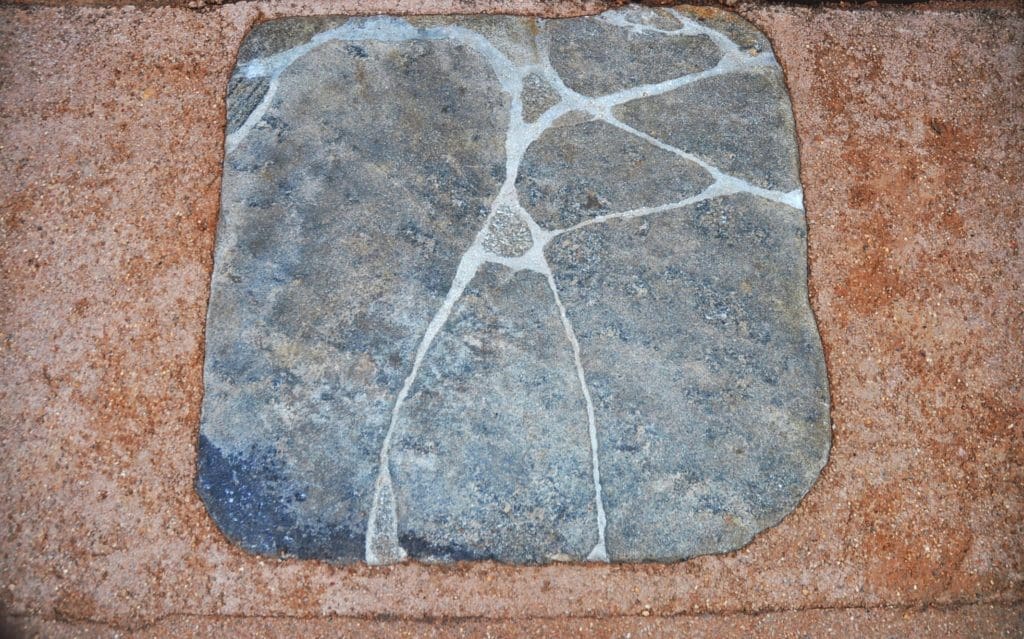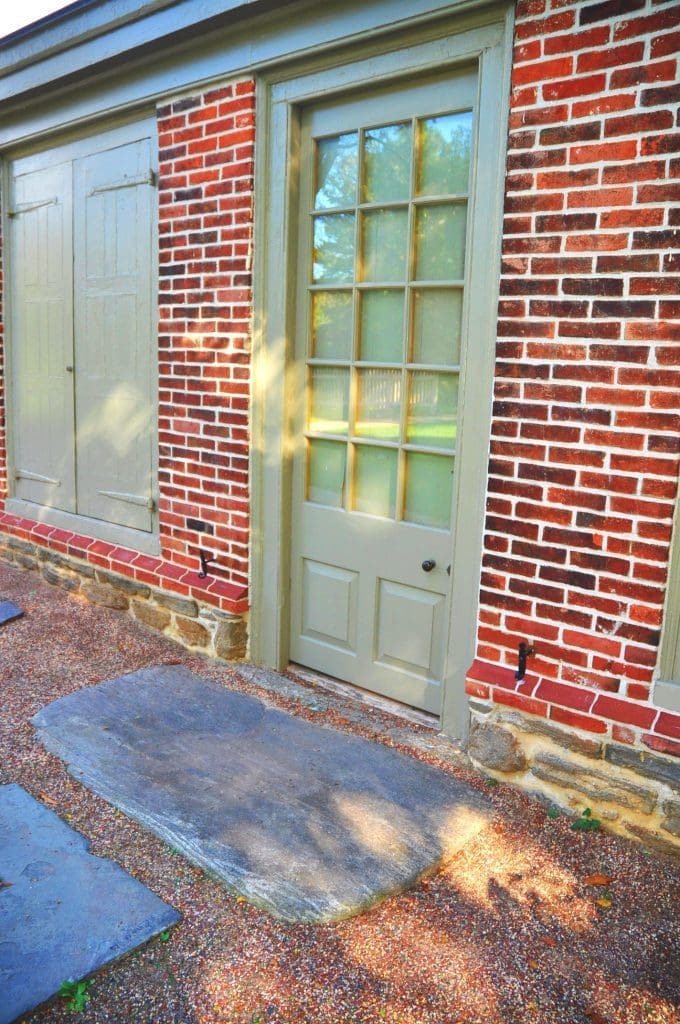A “Step” into Bartram History


The original paver by the house’s south entrance
As you stroll around the 1731 John Bartram House, you may notice stone pavers by the east, south, and west entrances. These, like the actual doors, are original to the Bartram-family era and add to the authenticity of the house experience.
We asked curator Joel Fry for his insights on these pavers: “At all the original, historic doors to the House there is either a large stone or stone pavement at the door threshold, which provided a hard, clean surface to step out onto. In the Bartram and Carr periods (1731 – 1850) all the garden paths were dirt, so in rainy or winter weather they could be muddy and slippery. The stone provided a hard place to step, and a place where one could clean off boots or shoes before entering the house.”
“The stone on the west side [pictured at top] – between the house and the new Ann Bartram Carr Garden – is known as the ‘back door paver.’ That stone is probably the original door step, ca. 1820, when Ann and Robert Carr cut that west or rear door into the house. Prior to that there was no west door on the back side of the house.”
“The stone at the west door remained in place (where it has now been returned) into the early 1920s. Then, when the west porch rotted and was removed, that large stone was moved closer to the house, right at the west door. During 2001 work on foundation drains, contractors mistakenly broke the back door paver, and then hastily cemented it back together. In our current work, the stone was more carefully reconstructed and cleaned by stone conservators.”
Come see these fascinating pavers during your next visit. House tours will continue until December 4th – get tour information here.


